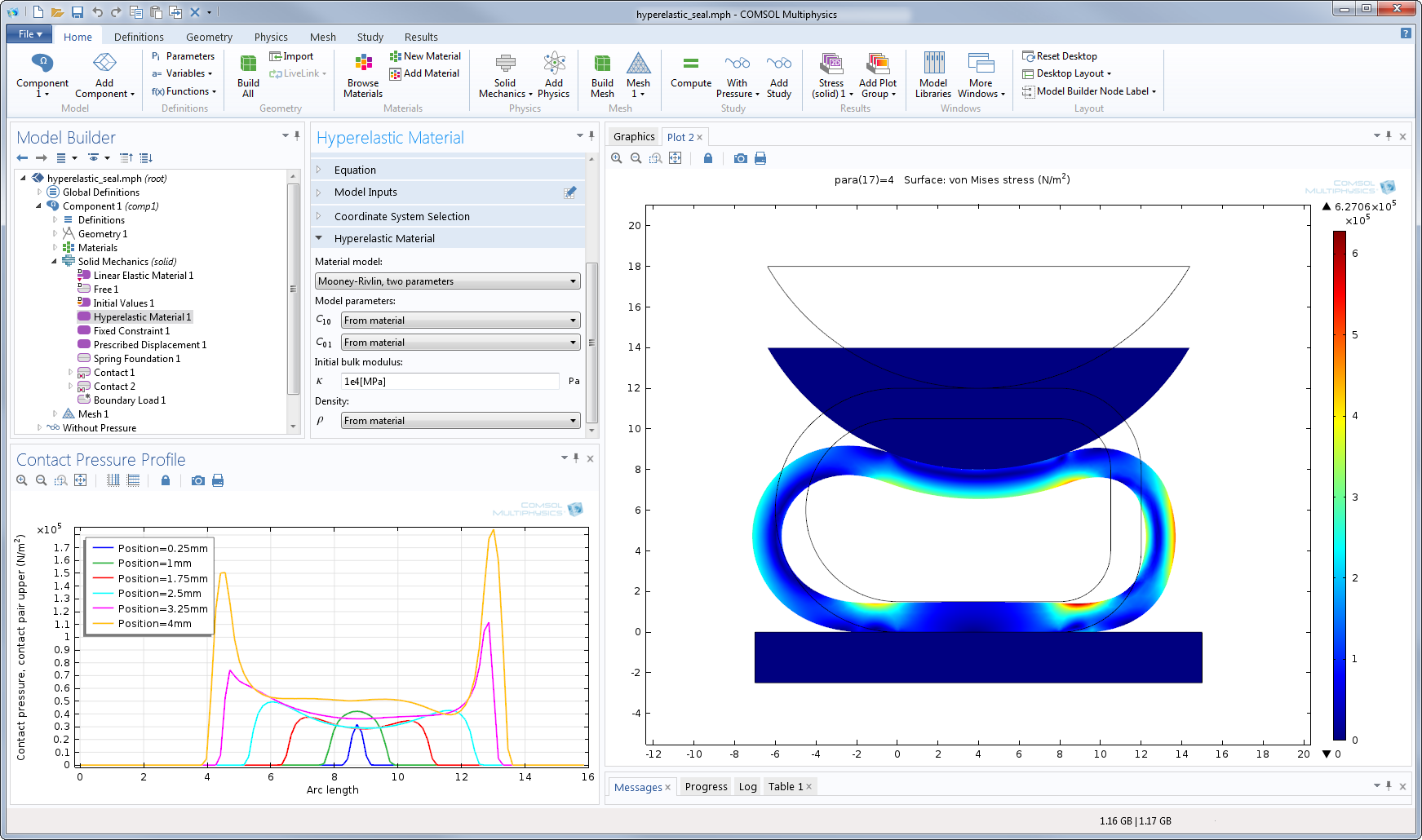
Hence you solve for the fluence rate represented by the variable u after specifying the diffusion coefficient c, the absorption coefficient a and the source term f.ģ Theory of fluorescence in biological media Fluorescence is a photo-physical process that can occur when light is absorbed by different tissue chromophores. Identifying the parameters in Equation (1) with those in (2) yields: u =φ c=D= a = µa In MultiPhysics, the Helmholtz equation is represented by: ∇(−c∇u ) + au = f A translation of the diffusion equation can be found in “Optical tomtography in medical imaging”, Arridge, Inverse Problems, 1999. In MultiPhysics we will use the Helmholtz representation of Equation 1, in steady state.
COMSOL 5.1 DIFFUSION DOWNLOAD
Download the zip-file “MultiPhysicsExercise.zip” and unzip it in your computer.Ģ Light propagation using the diffusion equation The diffusion equation, as stated in the diffusion computer exercise, is: 1 d φ (r, t ) − ∇D(r, t )∇φ (r, t ) + µ a φ (r, t ) = S (r, t ) c ' dt
COMSOL 5.1 DIFFUSION SOFTWARE
To download software used in this exercise, go to the homepage of the Tissue optics course. Finally, the exercises to be conducted during the classroom session are given. Practical guidelines of modeling using MultiPhysics and its graphical user interface are provided as a help for this exercise and for your projects. Following this, the theory of fluorescence and heat transfer in biological media is given. The reader should be familiar with the diffusion approximation for light propagation in biological media from lectures and previous computer exercises. In the sections that follow, we repeat the diffusion equation and illustrate how it is represented in MultiPhysics. Fluorescence is another photo-physical phenomenon that will be studied. In tissue optics this can be utilized when heating of tissue is considered since the light itself will act as a heat source when absorbed by the tissue. different physical phenomena that depend on each other can be solved iteratively. Besides allowing for arbitrary geometries, MultiPhysics also provides the “multiphysics” possibility, i.e. In this computer exercise the approach is basically the same but you are now provided with a graphical user interface where arbitrary geometries can be defined as well as inhomogeneities inside the geometry. In a previous computer exercise the method ADI was used to solve the diffusion equation. at sufficient distances from any light sources.

The diffusion equation is valid when the scattering is large compared to the absorption and when studying diffuse light propagation, i.e. Previously you have worked with the diffusion approximation to the radiative transfer equation. Light induced processes, such as fluorescence and heat transfer, will also be investigated. In this computer exercise light propagation in biological media will be treated. For more information about the Finite Element Method see for example Ottosen & Petersson “Introduction to the Finite Element Method”, 1992. If this element is considerably small the physical problem is assumed to vary linearly. Thus, instead of trying to solve a highly non-linear problem on the entire geometry, an approximate solution is sought in each element. The numerical solution relies on the Finite Element Method (FEM), in which the geometry studied is divided into a finite element mesh. This runs a check of your part's parameters, and displays an error message if the input parameters are outside of certain pre-determined conditions, such as the head of a bolt required to be smaller than its length.FEM computer exercise in Comsol MultiPhysics® 1 Introduction MultiPhysics is computer software that makes it possible to numerically solve partial differential equations. When you create your own part, you get access to a new setting for a Parameter Check. Note: Parts were called geometry subsequences in version 5.0. You can also create your own part libraries. Each instance of a part can have different values for the input parameters and you can position them relative to other geometry objects in your model.

Instances of these parts can be added to your model or application from the Part Libraries browser.


 0 kommentar(er)
0 kommentar(er)
